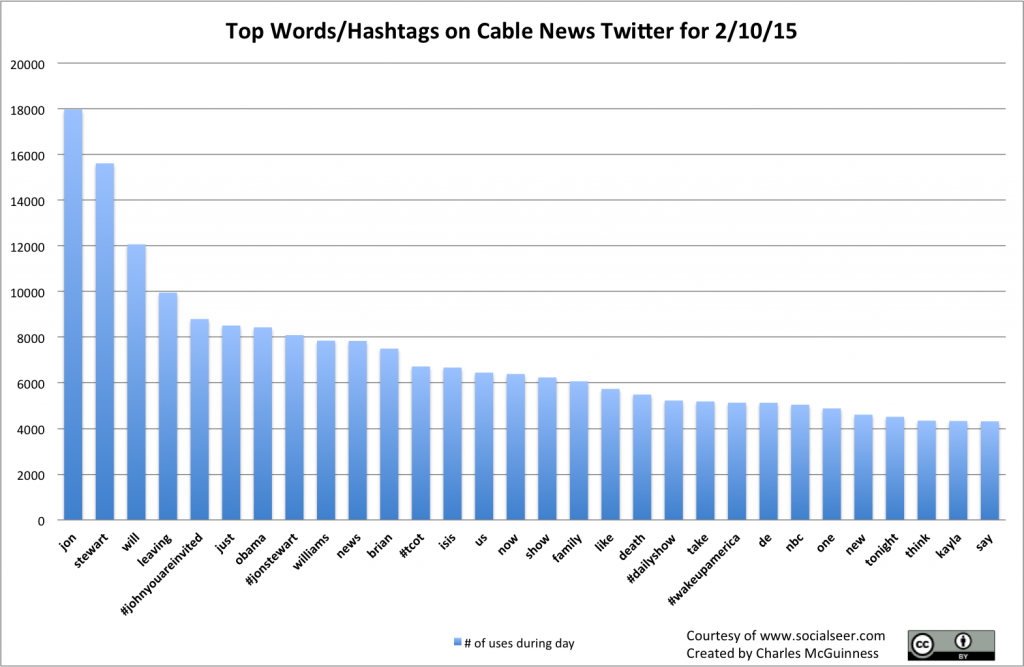One of the things that makes Twitter different is that it’s a world-wide conversation, even if we think the topics are purely domestic. That makes the Twitter ratings not just an adjunct to the Nielsen ratings but a window into a different world. Piers Morgan, for example, has a world-wide presence on CNN and other platforms, and so he often has the “best day” on Twitter because of that world-wide conversation.
But I want to mention another topic which is interesting — the #Blackfish documentary CNN ran. It’s been run in the UK as well, and there’s currently a large conversation on Twitter amongst UK viewers. It doesn’t show up as any particular show in the ratings, but it affects CNN in general and makes #blackfish the most talked about tag. I’m going to start filtering out #blackfish shortly because the conversation isn’t about CNN any more, but it’s an interesting reflection of how a conversation can take on a life of its own.
You can see any number of articles on the web about “the second screen” — essentially how viewers will have a (e.g.) tablet in hand monitoring social media while viewing a TV program. I think that paradigm is very narrow-sighted: real conversations can linger on long after that. If you’re a network, and want to monetize this, you need to find a way to keep your advertisers in the conversation as it winds on. One way, of course, is to advertise on Twitter. But another way should be found to involve advertisers in the ongoing conversation. That’s a new approach, and fraught with peril (in terms of potentially alienating your Twitter audience), but while there may be dragons this way, there is also treasure.
Reflecting on yesterday, Chris Hayes managed to spark the largest conversation of the day; even with this being a normally quiet week, his mention count was very healthy, driven by a discussion about religious freedom for corporations and the Iran negotiations.
Continue reading →

